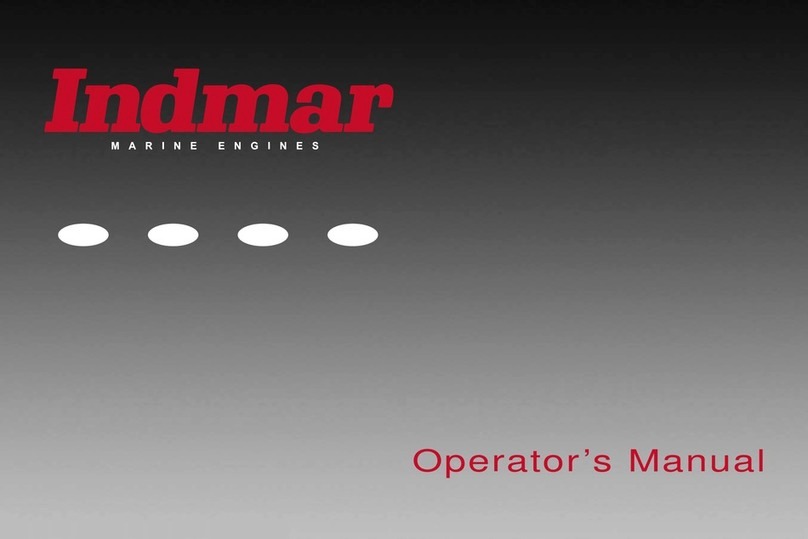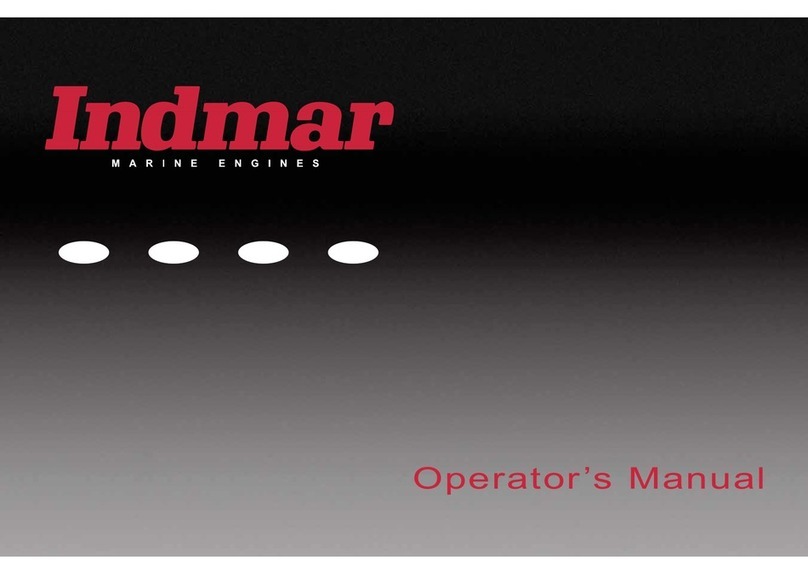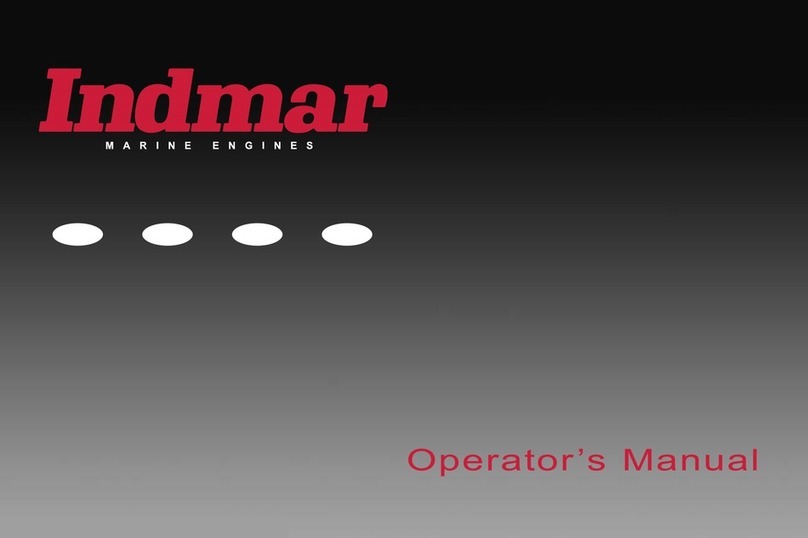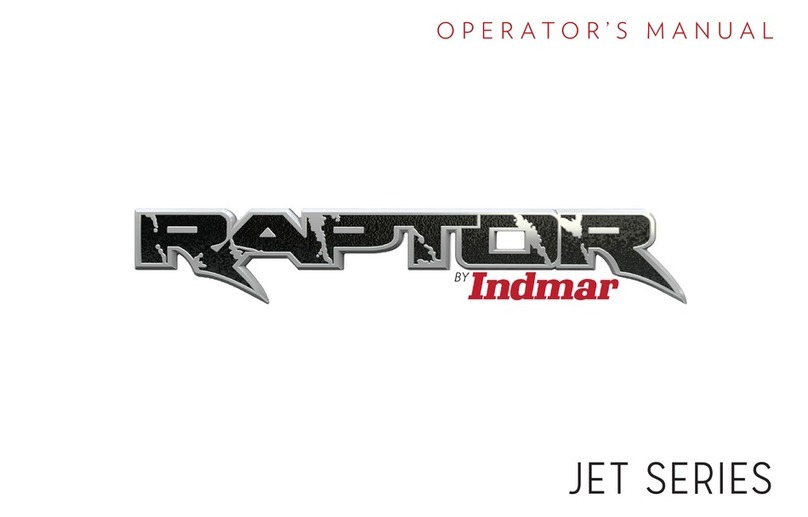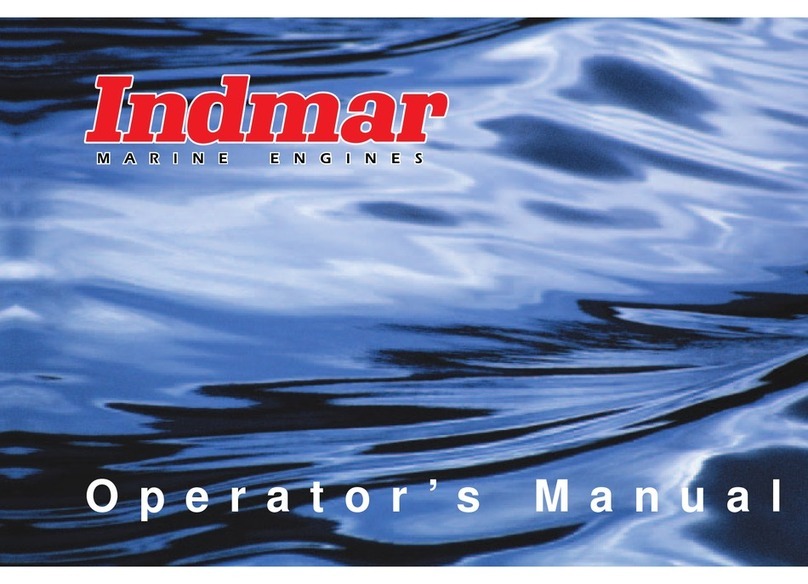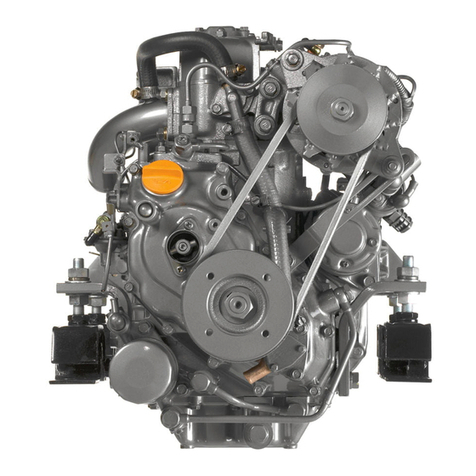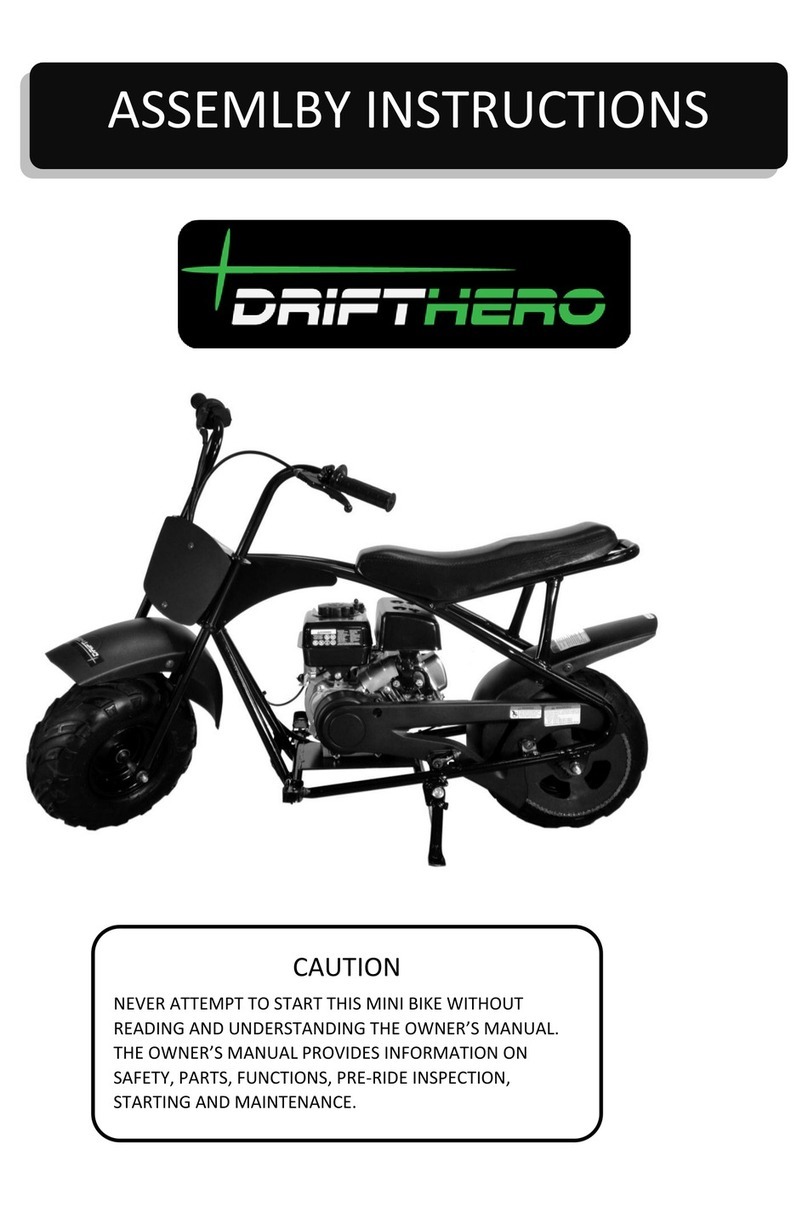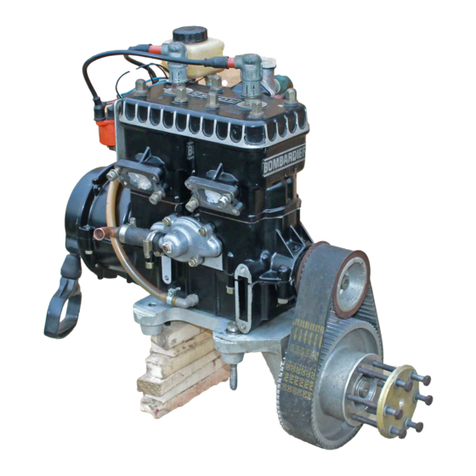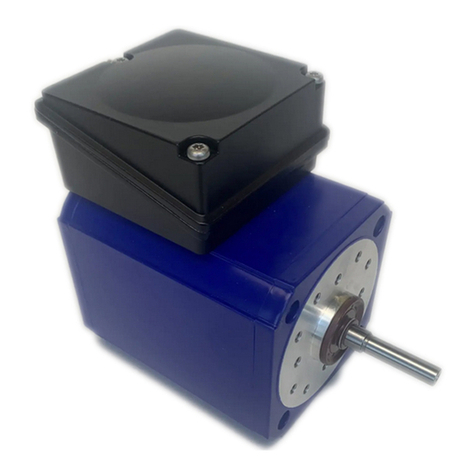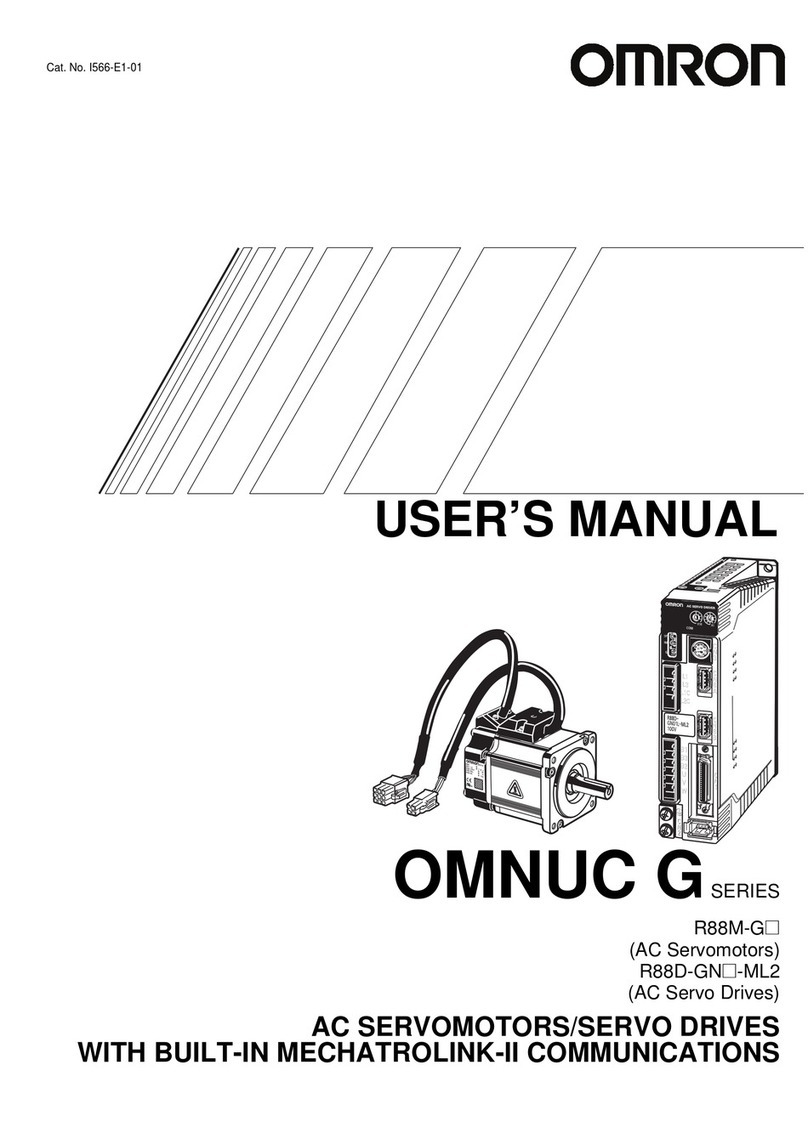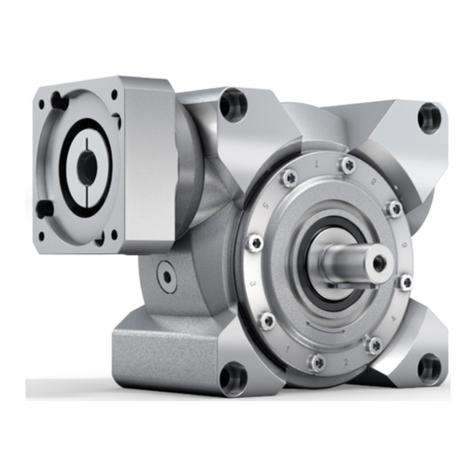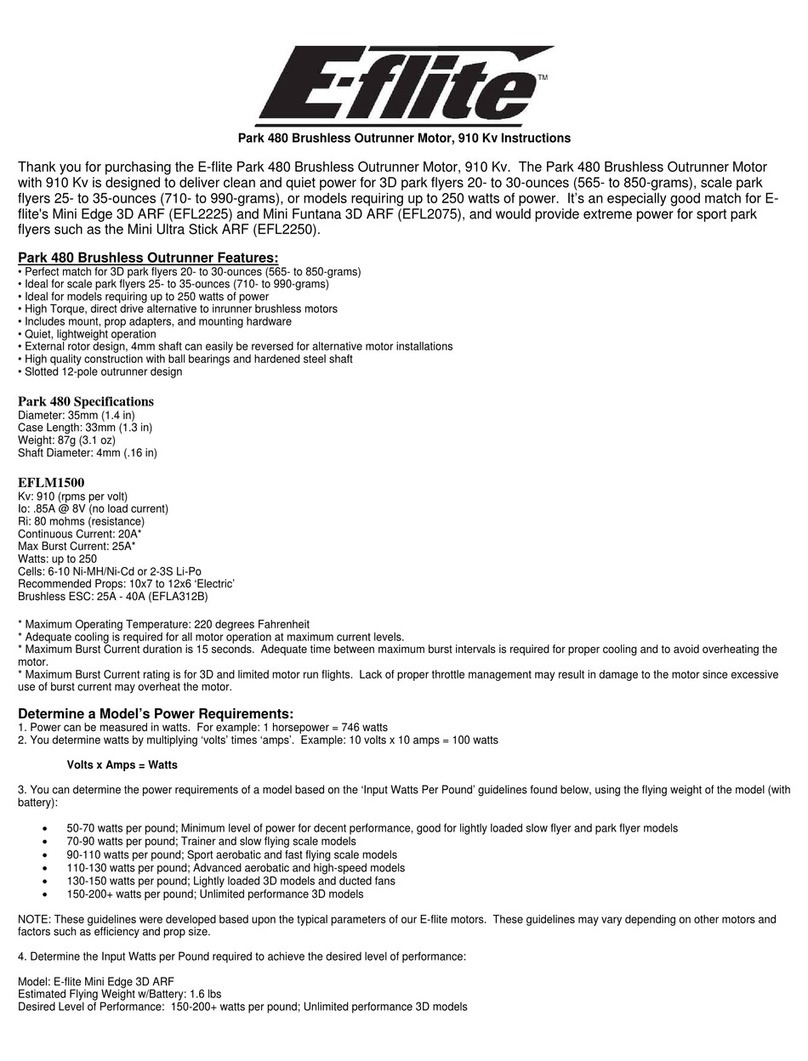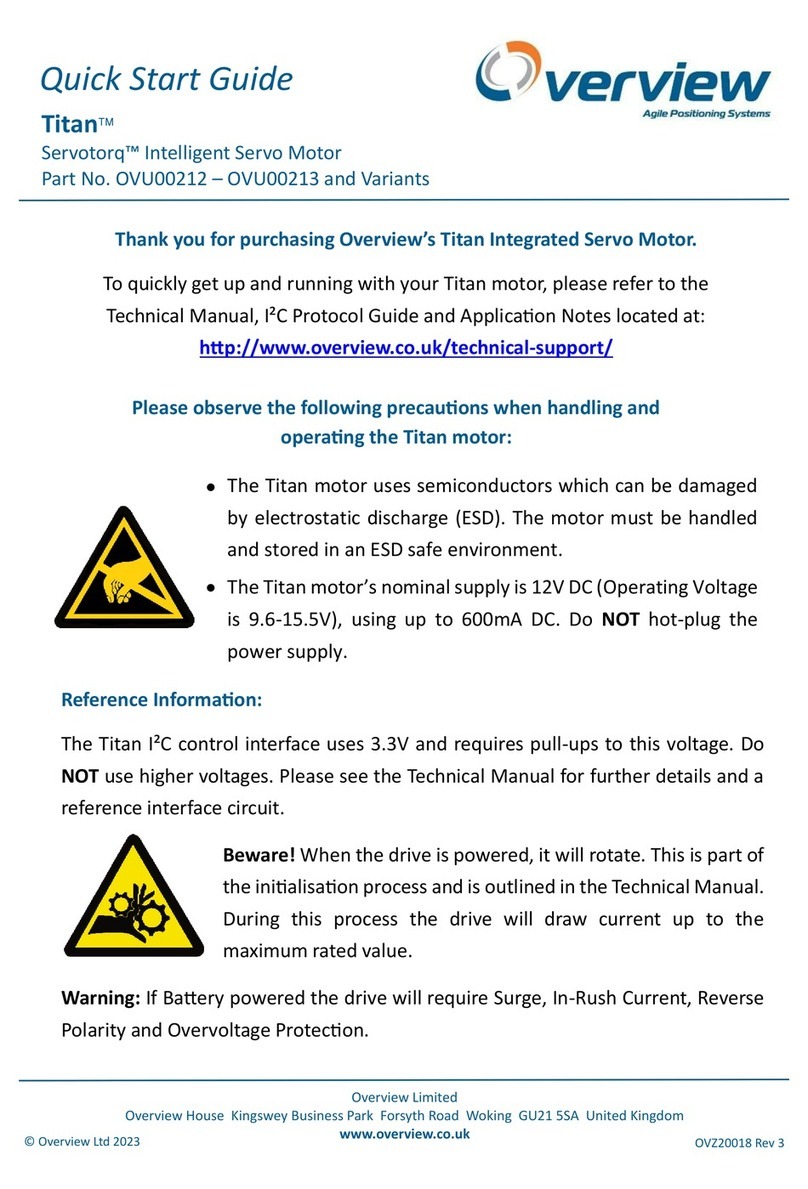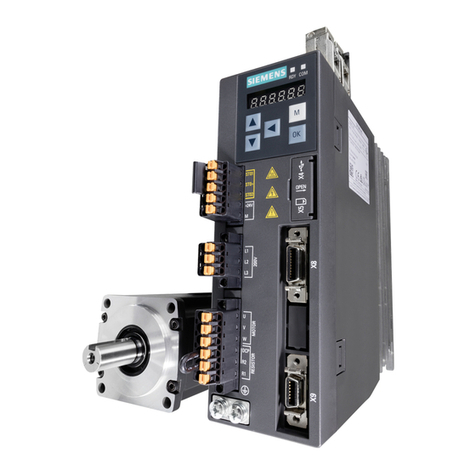Indmar Standard 360 User manual

6.2L

CALIFORNIA-SPECIFIC INFORMATION
Boats manufactured for use in California for model year 2018 and after
meet the California EVAP Emissions regulation for spark-ignition marine
watercraft. Boats meeting this requirement will have the following label
affixed near thehelm.
The fuel system in boats marketed in states other than California complies
with U.S. EPA-mandated evaporative emission standards at time of
manufacture using certified components.
CALIFORNIA AIR RESOURCES BOARD (CARB)
Outboard, sterndrive and inboard powered boats sold in the state of
California are equipped with special components and certified to meet
stricter environmental standards and exhaust emissions. All boats sold in
California since 2009 are required to meet Super-Ultra-Low (four-star)
emissions.
EXHAUST EMISSIONS
Sterndrive and inboard marine engine powered boats
meeting CARB’s exhaust emission standards are
required to display the four-star label on the outside
of the hull above the waterline. Outboard and
personal watercraft marine engines may also comply
with these standards.
Operating, servicing and maintaining a recreational
marine vessel can expose you to chemicals including
engine exhaust, carbon monoxide, phthalates and lead,
which are known to the State of California to cause
cancer and birth defects or other reproductive harm. To
minimize exposure, avoid breathing exhaust, service your
vessel in a well-ventilated area and wear gloves or wash
your hands frequently when servicing this vessel. For
more information go to: www.P65warnings.ca.gov/marine
Carbon monoxide (CO) can cause brain damage or death. Engine and
generator exhaust contains odorless and colorless carbon monoxide
gas. Carbon monoxide will be around the back of the boat when
engines or generators are running. Signs of carbon monoxide
poisoning include nausea, headache, dizziness, drowsiness and lack
of consciousness. Get fresh air if anyone shows signs of carbon
monoxide poisoning. See engine manufacturer’s manual for
information regarding carbon monoxide poisoning.

i
© 2020 Indmar Marine Engines
WELCOME
Dear Indmar Marine Engine Owner:
Thank you for selecting a boat powered by an Indmar Marine
engine.Indmar is proud to provide the power to the best boat
companies in the business and we hope that pride shows in the
quality of our products.In the unlikely event that you have a defect-
related problem with your boat’s engine or drive train, you can
rest assured knowing it is backed by our industry-leading five-year
warranty coverage on premium models.
This is another exciting year for Indmar and for the marine
industry. Indmar has joined forces with Ford Motor Company to
produce a line of marine engines designed to exceed customer
expectations.The 6.2L Ford-based engines are fuel injected and
equipped with catalytic converter exhaust systems to provide a
cleaner and safer boating experience for you and your family.
If you have any questions concerning your engine that are not
covered in this manual, please feel welcome to contact Indmar
Customer Service at (901) 353-9930 or visit our website, www.
indmar.com, and submit your question.
Thanks again for choosing an Indmar-powered boat.We wish you
safe, trouble-free boating.
Sincerely,
Team Indmar

ii
INDMARMARINEENGINESVALUESTATEMENT
Indmar Marine Engines has a pedigree going
back over 40 years in the inboard marine
industry and a proud tradition of pointing the way
forward. Today, this legendary brand delivers
an inimitable mix of unrivaled performance,
meticulous craftsmanship and groundbreaking
innovations – charting a course for others to
follow, yet leaving the competition behind.
INDMARMARINEENGINESCOMPANY
MISSION
To produce the world’s finest, most advanced
and most dependable gasoline inboard
marine engines at the best possible price,
while respecting the needs of our employees,
customers, vendors and the precious
environment we share.

iii
© 2020 Indmar Marine Engines
CONTENTS
Introduction.....................................................................................v
Section 1 – Safety ...................................................................... 1-1
Carbon Monoxide Gas ...........................................................1-2
Engine Oil............................................................................... 1-5
Cleaning Solvents .................................................................. 1-6
Entanglement......................................................................... 1-6
Environmental ........................................................................1-6
Section 2 – General Information................................................. 2-1
Using Oxygenated Fuels or Fuels with Alcohol...................... 2-3
Biobutanol-Blended Gasoline.................................................2-4
Fuels in Other Countries ........................................................2-4
Indmar Fuel Recommendations............................................. 2-5
Fuel System ........................................................................... 2-5
Battery.................................................................................... 2-6
“Service Required” or “Check Engine” Indicator..................... 2-9
Engine Cooling.....................................................................2-10
Aquatic Invasive Species (AIS) Prevention .......................... 2-11
Exhaust Hoses..................................................................... 2-14
Selecting a Propeller............................................................ 2-15
Section 3 – Pre-Start Checks ..................................................... 3-1
Pre-Start Checks.................................................................... 3-1
Section 4 – First-Time Operation and Break-In .......................... 4-1
First-Time Operation ..............................................................4-1
Break-In.................................................................................. 4-3
Section 5 – Engine Starting Procedures .................................... 5-1
How to Start Your Engine .......................................................5-1
If Engine Does Not Start ........................................................ 5-3
How to Clear the Engine ........................................................5-4
Engine Restart ....................................................................... 5-5
Section 6 – Normal Operation .................................................... 6-1
Sensible Operation................................................................. 6-1
Daily Routine.......................................................................... 6-1
Operating the Controls........................................................... 6-3
Unusual Vibration ...................................................................6-4
Section 7 – Maintenance............................................................ 7-1
General Service Notes........................................................... 7-1

iv
Engine Flame Arrestor .........................................................7-10
Engine Cooling.....................................................................7-11
Internal (Cooling System) Care............................................ 7-16
Fresh Water Cooling............................................................. 7-17
Fuel System ......................................................................... 7-19
Transmissions ......................................................................7-21
Electrical System ................................................................. 7-27
Wiring ................................................................................... 7-28
Accessory Drive ...................................................................7-30
Section 8 – Storage and Winter Lay-Up ..................................... 8-1
General Preparation...............................................................8-2
Reactivating Engine After Extended Storage.......................8-13
Extended Storage ................................................................8-15
Section 9 – Troubleshooting ....................................................... 9-1
Appendix A – Maintenance Components and Fluids..................A-1
Service Log ............................................................................A-3
Appendix B – Engine Specifications...........................................B-1
Appendix C – Indmar Limited Product Warranty ........................C-1

v
© 2020 Indmar Marine Engines
INTRODUCTION
This manual will acquaint you with basic information needed to
safely operate and maintain your Indmar engine. We suggest you
and all other operators read the entire manual before using your
boat.
We recommend you contact your Indmar dealer for all engine
service. Certified Indmar Technicians are trained to service your
Indmar engine and drive train. They have current specifications,
parts and the special equipment needed to service your Indmar
engine and drive train. To find your nearest Indmar dealer, please
visit our website at www.indmar.com or call (901) 353-9930.
To ensure that the proper information is available, note the six digit
engine serial number. The serial number is stamped on the engine
block. Refer to Figure 1.1 for locations. The serial number also
appears on the emissions label on the valve cover of the engine
and on several stick-on tags that are attached to major engine
components.
INDM-0012
2
3
1
1 - Engine Block
2 - Valve Cover
3 - Oil Pan
Figure 1.1 – Serial Number Locations

vi
WARRANTYREGISTRATION
The Federal Boat Safety Act of 1971 requires registrations of
marine products sold in the United States be maintained by the
manufacturer and dealers of those products.Your dealer should
have completed your warranty registration to comply with federal
regulations. This registration enables us to contact you, if it should
become necessary, to change or improve your product. The engine
serial number is stamped into the block. For additional serial number
locations, refer to Figure 1.1. Always retain a copy of the serial
number for your personal records.
Warranty registration must be received within 10 days after date
of purchase by the first owner. If your engine is not registered, all
warranties will be void.

vii
© 2020 Indmar Marine Engines
WARRANTYREGISTRATIONTRANSFER
The remainder of the engine warranty is transferable to a second
or subsequent owner. Warranty transfers must be completed within
10 days of the transfer of ownership.
If the trade-in and resale is handled by an authorized Indmar
dealer, the dealer must fill out the warranty registration transfer
form and send it and other paperwork specified along with the
warranty transfer fee and the transfer will be processed on
approval by Indmar.
If the sale of the boat is from a private owner to another individual,
the engine package must be inspected, at the seller or purchaser’s
expense, and the Inspection Form, Warranty Transfer Form,
specified paperwork and transfer fee and the transfer will be
processed on approval by Indmar.
The new boat owner will be notified within 10 days of Indmar’s
receipt of the transfer form whether the transfer has been
accepted or not. If the transfer has been accepted, the warranty
expiration date will also be provided for the new owner.
To obtain enjoyment from your boat, follow recommendations
described in this manual. The knowledge you gain through careful
review will help you experience lasting satisfaction.
Further information regarding the care, operation, required
equipment or specifications for your boat can be obtained from
your local US Coast Guard Auxiliary, US Power Squadron, state
boating authorities, or the American Red Cross. Know the law and
your responsibilities as a boat owner.
Any alteration, change, improper maintenance or abnormal
use by you which renders the engine or any of its components
unreasonably dangerous will void all warranties and Indmar will
not be liable for the resulting damages or injuries.

viii
EMISSIONCONTROLWARRANTYINFORMATION
The inboard engine in your boat includes
the Indmar Emission Control System
identified as SFI. It is also equipped
with heated oxygen sensors (HO2s),
2 catalytic converters (2 TWC) and an
onboard diagnostic system (OBD). The
fuel and ignition systems on your engine
meet the stringent requirements set forth
by the U.S. Environmental Protection
Agency (EPA) and the California Air
Resources Board (CARB). Indmar also
uses propylene glycol anti-freeze in the
closed cooling system of your engine to
reduce the environmental impact in the
event that anti-freeze is expelled from
the engine.
Your Indmar manufactured engine has
a special environmental label required
by the California Air Resources Board
(CARB). The label has 1, 2, 3 or 4 stars.
A hangtag, provided with your inboard engine, describes the
meaning of the star system.

ix
© 2020 Indmar Marine Engines
OPERATINGFUELSANDLUBRICANTS
In order to keep your engine operating efficiently and to maintain
the Emission Control System the following requirements must be
observed.
Fuel – Your engine was designed and certified to operate on the
unleaded fuels listed below. Fuel ratings must be based on the
(R+M)/2 method and meet the specifications ASTM D4814 in the US.
APPROVED FUEL FOR RAPTOR SERIES
MODEL GASOLINE
(PETROL) OCTANE ETHANOL %
0 101585
360-450 MID-GRADE
460-575 PREMIUM
ALL MODELS REGULAR
6.2L Indmar Standard 360 and
Premium 400, 440, and 450 Engines 89 Octane
6.2L 460 and Supercharged
575 Engines 91-93 Octane
Lubricant – Indmar uses and recommends a semi-synthetic
5W-30 oil meeting the API rating of SN for use in all its 360, 400
and 440 engines and fully synthetic 15W-50 in its 450, 460 and 575
engines.
Additives – Over time, oxidation of gasoline can form buildup of
harmful solids called gums. Water and impurities in the fuel system
can cause corrosion. To stabilize the fuel and prevent oxidation,
gum buildup, and corrosion during maintenance or storage, add an
NMMA certified gasoline additive product to the fuel tank after fill-up.
Only use products displaying the following mark on the label.
Refer to Section 2, General Information, for more information.
(0,66,21˨5(/$7(':$55$17<5(48,5(0(176
Your new engine is designed, built and equipped so it conforms at
the time of sale to the ultimate purchaser with the requirements
of EPA CFR 40, part 1045.120 and CARB Title 13, Division 3,
Chapter 9, Article 4.7, 2445.1 and 2445.2. It is free from defects in

x
materials and workmanship that may keep it from meeting these
requirements.
The warranty period begins on the date the engine is delivered
to an ultimate purchaser or first placed into service (e.g., a
demonstration engine or watercraft).
The emission-related warranty covers all components whose
failure would increase an engine’s emissions of any regulated
pollutant, including components listed in the following section
and components from any other system developed to control
emissions.
EMISSIONSCOMPONENTSWARRANTY
The following components are considered as part of the emissions
control system and are covered under the Emissions Control
Warranty.
1. Fuel Metering System
A. Fuel injectors
B. Fuel pressure regulator
C. Manifold Absolute Pressure Sensor
D. Throttle Position Sensor
E. Idle Air Control Valve
F. Throttle Body – Port Fuel Injection Models
G. Throttle Body Assembly – Throttle Body Fuel Injection
Models
H. Coolant Temperature Sensor
I. Intake Valves
J. Oxygen Sensors
2. Air Induction System
A. Intake Manifold
B. Air Filter (Flame Arrestor)
C. Supercharger
D. Turbocharger
3. Ignition System
A. Spark Plugs
B. Electronic Ignition System
C. Ignition coil and/or control module
D. Ignition Wires
4. Lubrication System
A. Oil pump and internal parts
5. Positive Crankcase Ventilation (PCV) System
A. PCV valve

xi
© 2020 Indmar Marine Engines
B. Oil Filler Cap
6. Exhaust System
A. Exhaust manifold(s)
B. Exhaust riser(s)
C. Exhaust valves
D. Catalytic Converters
7. Miscellaneous Items Used on Above Systems
A. Hoses, clamps, fittings, tubing, sealing gaskets or devices
and mounting hardware
B. Electronic Controls
C. Electronic Control Module
D. Onboard diagnostic system
E. Pulleys, belts and idlers
NOTICE
The repair or replacement of any warranted part otherwise eligible
for warranty coverage under the Emission Control Warranty may
be excluded from such warranty coverage if Indmar demonstrates
that the engine has been abused, neglected, or improperly
maintained and that such abuse neglect or improper maintenance
was the direct cause of the need for repair or replacement of the
part.
The emission warranty covers damage to other engine
components that is caused by the failure of a warranted part.
This manual contains written instructions for the proper
maintenance and use of your inboard engine. All emission
warranty parts are warranted by Indmar for the entire warranty
period of the engine.
Emission warranted parts that are scheduled for regular
inspection, but not regular replacement, are warranted by Indmar
for the entire warranty period of the inboard engine.
Add-on or modified parts that are not exempted by the Air
Resources Board may not be used. The use of any non-exempt
add-on or modified parts by the ultimate purchaser will be grounds
for disallowing a warranty claim made in accordance with these
warranty articles. The engine manufucturer will not be liable under
this article to warrant failures or warranted parts caused by the
use of a non-exempted add-on or modified part.

xii
Any emission warranty part repaired or replaced under the
terms of this warranty statement is warranted by Indmar for the
remainder of the warranty period of the original part. All parts
replaced under this limited warranty become the property of
Indmar.
If the ownership of a product is transferred during Emission
Components Warranty period, this warranty shall also be
transferred and be valid for the remaining coverage period
provided that Indmar is notified in the following way:
a. The former owner contacts Indmar and provides us with the
required information listed below; or
b. Indmar receives a proof that the former owner agreed to the
transfer of ownership and we are provided with the information
listed below.
- Current owner’s name, address, telephone,
engine serial
number and date of purchase
- New owner’s name, address, telephone, engine serial
number and date of transfer
Send the above information to:
Indmar Products
5400 Old Millington Rd
Millington, TN 38053
Attn: Emission Warranty Transfer
NOTICE
The above procedure is valid for the transfer of the Emission
Components warranty only. Refer to the Limited Warranty in
Appendix C of this manual for information regarding warranty
transfer of the remaining engine components.

xiii
© 2020 Indmar Marine Engines
(0,66,210$,17(1$1&(5(48,5(0(176
The following component maintenance is required to maintain
the Emission Control System of your engine. Refer to Section 7,
Maintenance, for procedures.
x Engine oil and filter: Change oil and filter after the first 10 hours
then every 75 hours or annually, whichever occurs first.
x Flame Arrestor: Clean every 100 hours. Replace as necessary.
x Spark Plugs: Replace every 500 hours.
x Fuel Injectors: Clean every 300 hours.
x Spark Plug Wires: Inspect annually. Replace as necessary.
NOTICE
Ignition timing, engine idle speed and air-fuel mixture are not
adjustable on this engine. NO OTHER ADJUSTMENTS NEEDED.
CALIFORNIAEMISSIONCONTROLWARRANTYSTATEMENT
YOURWARRANTYRIGHTSANDOBLIGATIONS
The California Air Resources Board and Indmar Products are
pleased to explain the emission control system warranty on your
2021 inboard engine. In California, new inboard engines must be
designed, built and equipped to meet the State’s stringent anti-
smog standards.
Indmar Products must warrant the emission control system on
your inboard engine for the periods of time listed below provided
there has been no abuse, neglect or improper maintenance of
your inboard engine.
Your emission control system may include parts such as the
carburetor or fuel injection system, the ignition system, and
catalytic converter. Also included may be hoses, belts, connectors
and other emission-related assemblies.
Where a warrantable condition exists, Indmar Products will repair
your inboard engine at no cost to you, including diagnosis, parts
and labor.

xiv
Manufacturer’s Warranty Coverage
For inboard marine engines 373 kilowatts (500 hp) and less: select
emission control parts from your model year 2021 inboard engine
are warranted for 3 years or 480 hours, whichever first occurs.
For inboard marine engines greater than 373 kilowatts (500 hp):
select electronic emission-related control parts from your model
year 2021 inboard engine are warranted for 3 years or 480
hours, whichever first occurs. Select mechanical emission related
components are warranted for 3 years or 150 hours of operation,
whichever first occurs.
However, warranty coverage based on the hourly period is only
permitted for engines equipped with hour meters. If any emission
related part on your engine is defective under warranty, the part
will be replaced or repaired by Indmar Products.
Owner’s Warranty Responsibilities
As the inboard engine owner, you are responsible for the
performance of the required maintenance listed in your owner’s
manual. Indmar Products recommends that you retain all receipts
covering maintenance on your inboard engine, but Indmar
Products cannot deny warranty solely for the lack of receipts
or your failure to ensure the performance of all scheduled
maintenance.
As the inboard engine owner, you should be aware that Indmar
Products may deny you warranty coverage if your inboard engine
or part has failed due to abuse, neglect, improper maintenance or
unapproved modifications.
You are responsible for presenting your inboard engine to an
Indmar Products service center as soon as a problem exists. The
warranty repairs will be completed in a reasonable amount of time,
not to exceed 30 days.
If you have any questions regarding your warranty rights and
responsibilities, you should contact Indmar Customer Service at
customerservice@indmar.com or 1-901-353-9930.

1-1
© 2020 Indmar Marine Engines
SectionOne
SAFETY
The words DANGER, WARNING, CAUTION and NOTICE are
used throughout this manual to highlight important information.
Be certain that the meanings of these alerts are known to all who
work on or near the equipment.
Follow the safety information throughout this manual in addition to
the safety policies and procedures of your employer.
!This safety alert symbol appears with most safety
statements. It means attention, become alert, your safety is
involved! Please read and abide by the message that follows
the safety alert symbol.
!DANGER
Indicates a hazardous situation which, if not
avoided, will result in death or serious injury.
!WARNING
Indicates a hazardous situation which, if not
avoided, could result in death or serious injury.
!CAUTION
Indicates a hazardous situation which, if not
avoided, could result in minor or moderate injury.
NOTICE
Indicates a situation which can cause damage to the engine,
personal property and/or the environment, or cause the equipment
to operate improperly.
OTE:N Indicates a procedure, practice or condition that should be
followed in order for the engine or component to function
in the manner intended.

1-2
SECTIONONE
CARBONMONOXIDEGAS
!DANGER
Carbon monoxide gas (CO) is colorless, odorless
and extremely dangerous. All engines and fuel
burning appliances produce CO as exhaust.
Direct and prolonged exposure to CO will cause
BRAIN DAMAGE or DEATH. Signs of exposure to
CO include nausea, dizziness and drowsiness.
Ensure adequate ventilation to prevent
accumulation of CO in the boat.
Each year, boaters are injured or killed by carbon monoxide.
Virtually all of these injuries and deaths are preventable. Carbon
monoxide is a potentially deadly gas produced anytime a carbon-
based fuel, such as gasoline, burns. Carbon monoxide sources
on your boat include gasoline engines and generators, cooking
ranges, space heaters and water heaters.
Do not confuse carbon monoxide poisoning with seasickness,
intoxication or heat stress. If someone complains of irritated
eyes, headache, nausea, weakness, dizziness or drowsiness,
or you suspect carbon monoxide poisoning, immediately move
the person to fresh air, investigate the cause and take corrective
action. Seek medical attention if necessary.
Indmar engines are equipped with catalytic converters which
significantly reduce harmful CO emissions, but it is important that
all of the DO’s and DON’Ts still be followed.
Please follow these DOs and DON’Ts to ensure a safe boating
experience every time.
DON’T swim or sit near the swim platform when any engine is
running.
DON’T hold on to the swim platform while the boat is underway
(no “Teak Surfing”).
DON’T moor next to another boat whose engine is running.
DON’T confuse carbon monoxide poisoning with seasickness or
intoxication.

1-3
SAFETY
© 2020 Indmar Marine Engines
DO immediately move the person to fresh air, investigate the
cause and take corrective action if someone on board complains
of irritated eyes, headache, nausea, weakness or dizziness. Seek
medical attention if necessary.
DO make sure generators are properly ventilated and keep engine
and generator exhausts clear.
DO always shut off engine and generator when moored, anchored
or standing still.
DO be aware that the station wagon effect, or backdrafting, can
cause carbon monoxide to accumulate inside the cabin, cockpit
and bilge when the boat is underway, moving at slow speed or
idling.
DO keep your boat’s engine well-maintained and regularly check
to make sure carbon monoxide detectors in the cabin are working
properly.
DO always wear a properly fitted life jacket while in or around
water.
For more information on carbon monoxide and boats, contact the
US Coast Guard Office of Boating Safety at 1-800-368-5647 or
www.uscgboating.org or your state boating law administrator at
1-800-225-9487 or www.nasbla.org.

1-4
SECTIONONE
FUEL
!DANGER
Gasoline (petrol) is extremely flammable and
highly explosive under certain conditions.
Explosive gasoline fumes may accumulate in
the engine compartment. Failure to properly
ventilate fumes with the bilge blower may result
in explosive atmosphere.
Indmar marine engines use gasoline (petrol) for fuel. The area
under the engine and around the gasoline tank and supply lines
is not open to outside air. Ventilation around these areas must be
provided by your bilge blower system and air vents located around
the boat. We recommend taking time out to carefully inspect your
boat at least once a day for gasoline fumes, oil leaks, and areas
where wiring may be worn or damaged.
!WARNING
Always operate the bilge blower at least 4
minutes prior to starting the engine. Raise the
engine cover to ventilate fumes. Inspect the
engine and compartment for any fluid or fuel
leaks.
x Do not smoke or allow open flames or sparks nearby when
refueling.
x Always stop the engine before refueling.
x Maintain contact between the fuel nozzle and the fuel tank or
container to prevent electrostatic spark. Do not use a plastic
funnel.
x Do not block fuel vents.
x Do not store fuel in any containers or compartments which are
not designated for fuel storage and do not use these storage
areas for any other purpose.
This manual suits for next models
11
Table of contents
Other Indmar Engine manuals
Popular Engine manuals by other brands

SEW-Eurodrive
SEW-Eurodrive DR Series Addendum to the operating instructions
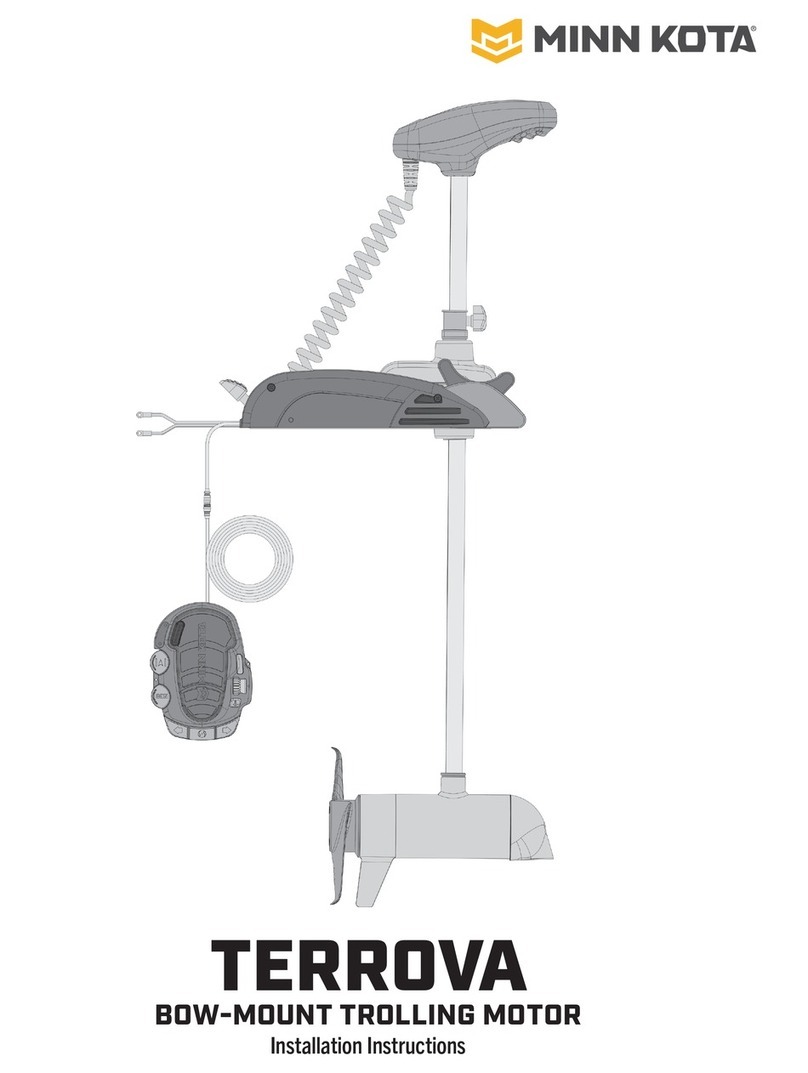
MINN KOTA
MINN KOTA TERROVA installation instructions

Ingersoll-Rand
Ingersoll-Rand MULTI-VANE M004 Series Operation and maintenance manual
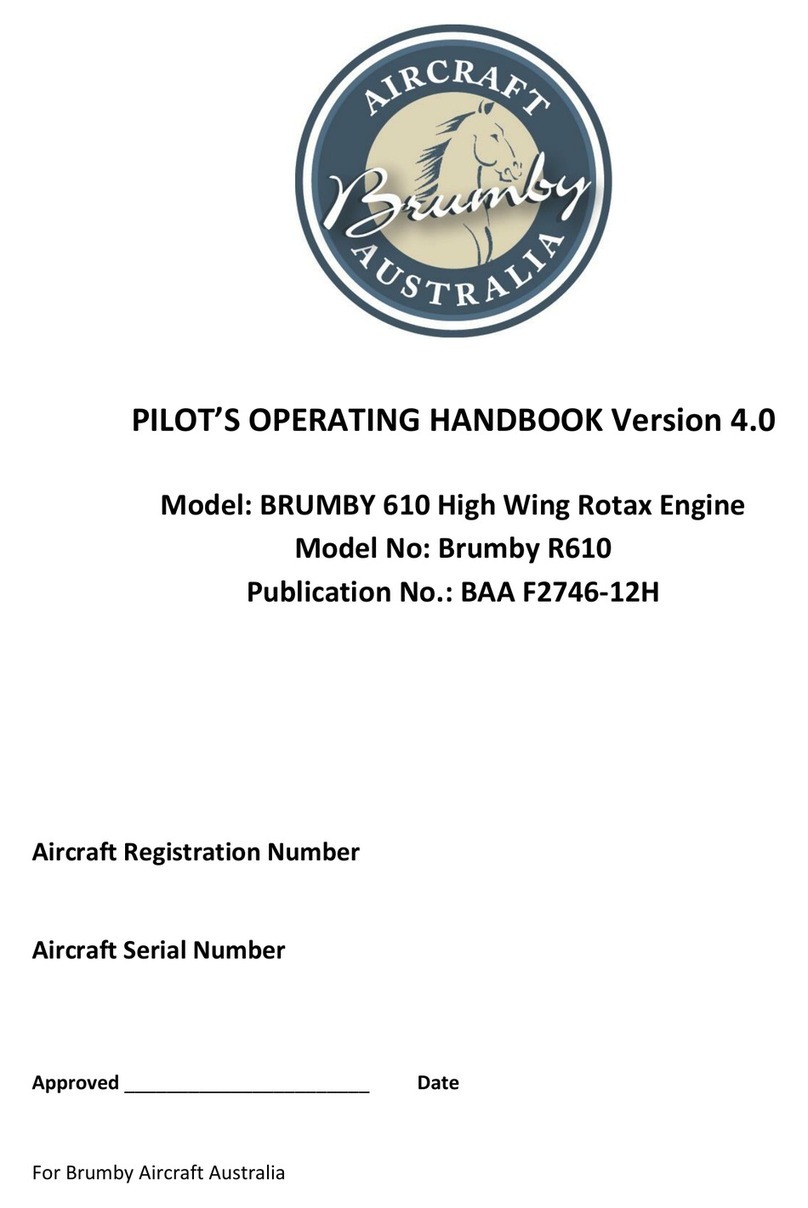
BRUMBY
BRUMBY 610 Pilot operating handbook

TecumsehPower
TecumsehPower LV148EA manual
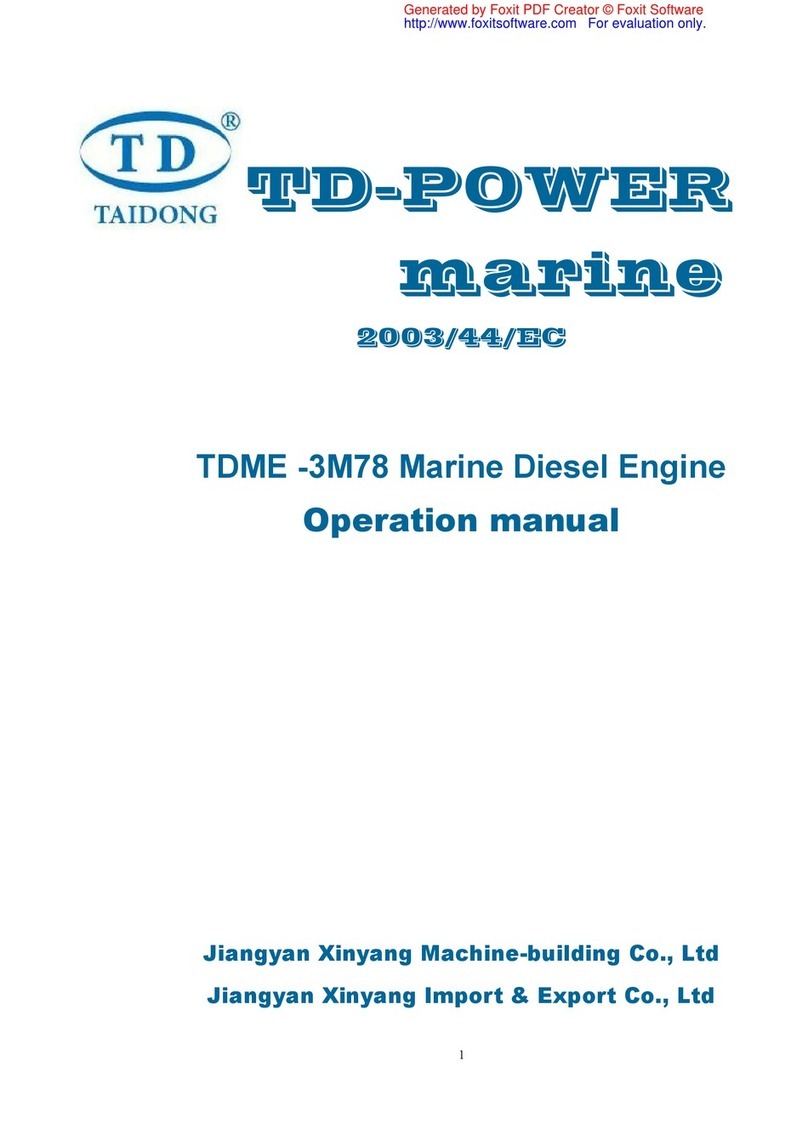
Taidong
Taidong TDME-3M78 Operation manual
